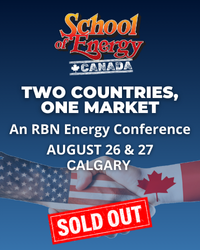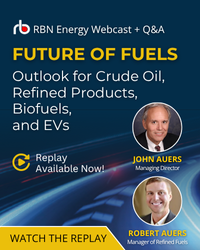Natural gas spot prices at Sumas, WA, on Friday went as high as $200/MMBtu, a record price not only for the Pacific Northwest spot gas market, but for the U.S. That level surpassed even the highest price seen in the premium Northeast market in the pre-Shale Era. Other Western prices also rose Friday but not to anywhere near Sumas, with intraday highs at the other hubs mostly staying below $10/MMBtu. This is just the latest instance of turmoil in the Pacific Northwest gas market since last fall, when a rupture on Enbridge’s Westcoast Energy/BC Pipeline system (on October 9) disrupted Canadian gas exports to Washington State at the Sumas border crossing point. Ongoing testing on the Westcoast system and the resulting capacity reductions for deliveries to Sumas, along with reduced deliverability at the region’s largest storage facility, Jackson Prairie, over the past month have made the Pacific Northwest more of a demand “island” than ever, especially as those issues coincide with this week’s polar-vortex weather. Sumas prices for today’s flows re-entered the stratosphere, averaging just under $16/MMBtu, but remained the highest price in the country. Today, we review the market conditions contributing to the sky-high prices.
The stage was set for flow disruptions and severe price spikes in the Evergreen State well before the winter of 2018-19 began. As we discussed in Chain Reaction, the turmoil started on October 9, 2018, when a rupture on Enbridge’s 2.9-Bcf/d BC Pipeline system (aka Westcoast Energy Pipeline, or WEP; dark green line on the map in Figure 1) cut off flows on one of only two gas pipeline systems directly supplying gas to Washington State.
WEP comprises two parallel mainlines — one 36-inch-diameter and the other 30-inch-diameter — that move Alberta and British Columbia gas supply from northeastern BC south to a 1.3-Bcf/d interconnect at the Huntingdon, BC/Sumas, WA, border crossing point (orange dot) with Williams’s Northwest Pipeline (NWPL; light orange system). From there, the gas is delivered to local distribution companies (LDCs), gas-fired power generation plants, gas storage facilities, as well as for petroleum refining, primarily in Washington State but also some in Oregon and Idaho. The only other supply routes available to Washington are northbound flows of Rockies gas on the bidirectional NWPL system, or deliveries of Canadian gas from Gas Transmission Northwest (GTN, red line) to NWPL via a bi-directional interconnect located in Stanfield, OR, just northwest of NWPL’s Meacham compressor station in northeastern Oregon (black dot).
Join Backstage Pass to Read Full Article







